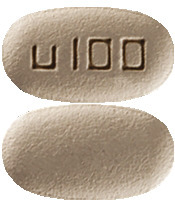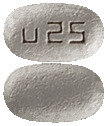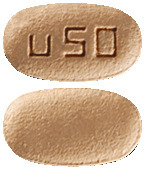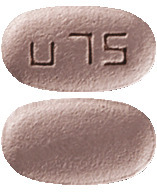SUMMARY CMI
Briviact® tablets and oral solution
Consumer Medicine Information (CMI) summary
The full CMI on the next page has more details. If you are worried about using this medicine, speak to your doctor or pharmacist.
1. Why am I using Briviact®?
Briviact® contains the active ingredient brivaracetam. Briviact® is used to are used in combination with other medicines to control epilepsy.
For more information, see Section 1. Why am I using Briviact®? in the full CMI.
2. What should I know before I use Briviact®?
Do not use if you have ever had an allergic reaction to Briviact® or any of the ingredients listed at the end of the CMI.
Talk to your doctor if you have any other medical conditions, take any other medicines, or are pregnant or plan to become pregnant or are breastfeeding.
For more information, see Section 2. What should I know before I use Briviact®? in the full CMI.
3. What if I am taking other medicines?
Some medicines may interfere with Briviact® and affect how it works.
A list of these medicines is in Section 3. What if I am taking other medicines? in the full CMI.
4. How do I use Briviact®?
- Your doctor will tell you how much Briviact® you will need to take each day. This may depend on your condition and whether or not you are taking any other medicines.
More instructions can be found in Section 4. How do I use Briviact®? in the full CMI.
5. What should I know while using Briviact®?
| Things you should do |
|
| Things you should not do |
|
| Driving or using machines |
|
| Drinking alcohol |
|
| Looking after your medicine |
|
For more information, see Section 5. What should I know while using Briviact®? in the full CMI.
6. Are there any side effects?
The following are common side effects of dizziness, flu and upper respiratory tract infections, cough, nausea (feeling sick) or vomiting constipation, feeling tired, drowsy or sleepy.
The following are potential serious side effect feelings of depression, anxiety or nervousness, feeling aggressive, spinning sensations, recurrent infections, allergic reactions, thoughts of harming yourself and more frequent or more severe seizures, particular care should be taken.
For more information, including what to do if you have any side effects, see Section 6. Are there any side effects? in the full CMI.
FULL CMI
Briviact® tablets and oral solution (pronounced "BREE-vee-act")
Active ingredient(s): Brivaracetam ("BREE-va-RA-se-tam")
Consumer Medicine Information (CMI)
This leaflet provides important information about using Briviact®. You should also speak to your doctor or pharmacist if you would like further information or if you have any concerns or questions about using Briviact®.
Where to find information in this leaflet:
1. Why am I using Briviact®?
2. What should I know before I use Briviact®?
3. What if I am taking other medicines?
4. How do I use Briviact®?
5. What should I know while using Briviact®?
6. Are there any side effects?
7. Product details
1. Why am I using Briviact®?
Briviact® contains the active ingredient brivaracetam. Briviact® This medicine belongs to a group of medicines called antiepileptics.
Briviact® is used in combination with other medicines to control epilepsy. Epilepsy is a condition where you have repeated seizures. There are many different types of seizures, ranging from mild to severe.
2. What should I know before I use Briviact®?
Warnings
Do not use Briviact® if:
- you are allergic to brivaracetam or any of the ingredients listed at the end of this leaflet.
- Always check the ingredients to make sure you can use this medicine.
Check with your doctor if you:
- have any other medical conditions especially, kidney problems and liver problems.
- take any medicines for any other condition, especially barbiturates (such as phenobarbitone) or any other antiepileptic medicines (such as carbamazepine, lamotrigine or levetiracetam).
During treatment, you may be at risk of developing certain side effects. It is important you understand these risks and how to monitor for them. See additional information under Section 6. Are there any side effects?
Pregnancy and breastfeeding
Check with your doctor if you are pregnant or intend to become pregnant.
Talk to your doctor if you are breastfeeding or intend to breastfeed.
Briviact® may affect your developing baby if you take it during pregnancy. However, it is very important to control your seizures while you are pregnant. Your doctor will outline and weigh up all the risks and benefits of taking Briviact® during pregnancy to help decide whether or not you should take it.
Children less than 4 years of age
- Briviact® is not recommended for use in children under the age of 4 years as its safety and effectiveness has not been established in this age group.
3. What if I am taking other medicines?
Tell your doctor or pharmacist if you are taking any other medicines, including any medicines, vitamins or supplements that you buy without a prescription from your pharmacy, supermarket or health food shop.
Some medicines may interfere with Briviact® and affect how it works.
- rifampicin, a medicine used to treat tuberculosis
Briviact® does not interact with the oral contraceptive pill.
However, you may be given Briviact® together with other antiepileptic medicines that do interact and may affect the effectiveness of your contraceptive. Your doctor may advise you to use an additional method of contraception if you take Briviact® with other antiepileptic medicines.
Check with your doctor or pharmacist if you are not sure about what medicines, vitamins or supplements you are taking and if these affect Briviact®.
4. How do I use Briviact®?
How much to take:
- Follow all directions given to you by your doctor carefully. They may differ from the information contained in this leaflet.
- Your doctor will tell you how much Briviact® you will need to take each day. This may depend on your condition and whether or not you are taking any other medicines.
- If you do not understand the instructions on the pack, ask your doctor or pharmacist for help.
- Follow the instructions provided and use Briviact® until your doctor tells you to stop.
When to take Briviact®
- Briviact® should be used twice a day, once in the morning and once at night. Take it at about the same time each day.
- Taking your medicine at the same time each day will have the best effect. It will also help you remember when to take it.
- It does not matter if you take this medicine before or after food.
How to take Briviact®
Tablets
Swallow Briviact® tablets whole with a glass of water.
Oral Solution
Press the cap and turn it anticlockwise to open the bottle (figure 1). Separate the adaptor from the syringe (figure 2)


Insert the adaptor into the bottle neck. Ensure it is well fixed (figure 3). Take the syringe and put it in the adaptor opening (figure 4)


Turn the bottle upside down (figure 5) and

Fill the syringe with a small amount of solution by pulling the plunger down (figure 6), then push the plunger upward in order to remove any possible bubble (figure 7). Pull the plunger down to the graduation mark corresponding to the quantity in millilitres (mL) prescribed by your doctor (figure 8). The plunger may rise back up the barrel on the first dosage. Therefore, ensure that the plunger is kept in position until the dosing syringe is disconnected from the bottle.



Turn the bottle the right way up (figure 9) Remove the syringe from the adaptor (figure 10).


There are two ways in which you can choose to drink the medicine:
- empty the contents of the oral syringe into a little water by pushing the plunger to the bottom of the oral syringe (figure 11) – you will then need to drink all of the water (add just enough to make it easy to drink) or,
- drink the solution directly from the oral syringe without water (figure 12) – drink the whole contents of the oral syringe.


Close the bottle with the plastic screw cap (you do not need to remove the adaptor).
To clean the syringe, rinse with cold water only, moving the plunger several times up and down to take up and expel the water, without separating the two components (figure 13).
Keep the bottle, the oral syringe, and the leaflet in the carton.

If you forget to use Briviact®
Briviact® should be used regularly at the same time each day. If you miss your dose at the usual time, take a single dose as soon as you remember.
Do not take a double dose to make up for the dose you missed.
This may increase the chance of you getting an unwanted side effect.
Contact your doctor if you have missed one or more doses.
If you are not sure what to do, ask your doctor or pharmacist.
If you have trouble remembering to take your medicine, ask your pharmacist for some hints.
If you use too much Briviact®
If you think that you have used too much Briviact®, you may need urgent medical attention. Symptoms of overdose may include feeling dizzy or drowsy.
You should immediately:
- phone the Poisons Information Centre
(by calling 13 11 26), or - contact your doctor, or
- go to the Emergency Department at your nearest hospital.
You should do this even if there are no signs of discomfort or poisoning.
5. What should I know while using Briviact®?
Things you should do:
- Most antiepileptic medicines take time to work, so do not be discouraged if you do not feel better straight away. Continue taking your medicine for as long as your doctor tells you to.
- This medicine helps control your condition but does not cure it. Therefore, you must take your medicine every day, even if you feel well.
- Before you have any surgery or emergency treatment, tell your doctor or dentist that you are taking Briviact®.
Call your doctor straight away if you:
- Notice an increase in seizures or a change in the type of seizures you usually have.
- Have symptoms of depression or thoughts of harming yourself.
Tell your doctor if you:
- Feel Briviact® is not helping your condition. Your doctor may need to change your medicine.
- For any reason, you have not taken this medicine exactly as prescribed. Otherwise, your doctor may change your treatment unnecessarily.
- Become pregnant while taking this medicine, tell your doctor.
Be sure to keep all of your doctor's appointments so that your progress can be checked. Your doctor will check your progress and may want to take some tests from time to time. This helps to prevent unwanted side effects.
Remind any doctor, dentist, or pharmacist you visit that you are using Briviact®.
Things you should not do:
- Stop taking Briviact®, or change the dosage, unless your doctor tells you to. Stopping Briviact® suddenly may cause unwanted side effects or make your condition worse. Your doctor will slowly reduce your dose before you can stop taking it completely.
- Do not give Briviact® to anyone else, even if their symptoms seem similar to yours or they have the same condition as you.
- Do not take Briviact to treat any other complaints unless your doctor tells you to.
Driving or using machines
Be careful before you drive or use any machines or tools until you know how Briviact® affects you.
Briviact® may cause dizziness in some people. If you are feeling dizzy or drowsy, do not drive a car, operate machinery, or do anything else that could be dangerous.
Drinking alcohol
Tell your doctor if you drink alcohol.
Combining Briviact® with alcohol is not recommended. If you drink alcohol while taking Briviact® the negative effects of alcohol may be increased.
Looking after your medicine
Keep your medicine in the pack until it is time to take them. If you take the tablets out of the pack, they will not keep well.
Store your tablets & oral solution in a cool dry place where the temperature stays below 30°C, away from moisture, heat or sunlight; for example, do not store it:
- in the bathroom or near a sink, or
- in the car or on windowsills.
Keep it where young children cannot reach it.
When to discard your medicine
Dispose of any unused oral solution within 5 months of opening the bottle.
If your doctor tells you to stop taking this medicine or the expiry date has passed, ask your pharmacist what to do with any medicine that is left over.
Getting rid of any unwanted medicine
If you no longer need to use this medicine or it is out of date, take it to any pharmacy for safe disposal.
Do not use this medicine after the expiry date.
6. Are there any side effects?
All medicines can have side effects. If you do experience any side effects, most of them are minor and temporary. However, some side effects may need medical attention.
See the information below and, if you need to, ask your doctor or pharmacist if you have any further questions about side effects.
Less serious side effects
| Less serious side effects | What to do |
Nervous system related:
| Speak to your doctor if you have any of these less serious side effects and they worry you. |
Serious side effects
| Serious side effects | What to do |
Nervous system related:
| Call your doctor straight away, or go straight to the Emergency Department at your nearest hospital if you notice any of these serious side effects. |
Tell your doctor or pharmacist if you notice anything else that may be making you feel unwell.
Other side effects not listed here may occur in some people.
Reporting side effects
After you have received medical advice for any side effects you experience, you can report side effects to the Therapeutic Goods Administration online at www.tga.gov.au/reporting-problems. By reporting side effects, you can help provide more information on the safety of this medicine.
Always make sure you speak to your doctor or pharmacist before you decide to stop taking any of your medicines.
7. Product details
This medicine is only available with a doctor's prescription.
What Briviact® contains
| Active ingredient (main ingredient) | brivaracetam |
| Other ingredients (inactive ingredients) | Oral Solution:
|
| Potential allergens | Oral Solution - hydroxybenzoates and sorbitol Tablets - Lactose |
Do not take this medicine if you are allergic to any of these ingredients.
What Briviact® looks like
Oral Solution
Briviact® 10 mg/mL Oral Solution AUST R 243793 is packed in a 300 mL glass bottle. The pack also contains a 5 mL and 10 mL oral syringe and an adaptor for the syringe.
Tablets
Come in the following 5 strengths:
- Briviact® 25 mg tablets AUST R 243796 Grey, oval, film-coated, and debossed with "u25" on one side.
- Briviact® 50 mg tablets AUST R 243797– Yellow, oval, film-coated, and debossed with "u50" on one side.
- Briviact® 75 mg tablets AUST R 243798 - Purple, oval, film-coated, and debossed with “u75” on one side.
- Briviact 100 mg tablets AUST R 243792 - Green-grey, oval, film-coated, and debossed with “u100” on one side.
Who distributes Briviact®
UCB Pharma
A division of UCB Australia Pty Ltd
Level 1, 1155 Malvern Road
Malvern Vic 3144
Australia
This leaflet was prepared in January 2025
Published by MIMS May 2025





 The relative risk for suicidal thoughts or behaviour was higher in clinical trials for epilepsy than in clinical trials for psychiatric or other conditions, but the absolute risk differences were similar for the epilepsy and psychiatric indications.
The relative risk for suicidal thoughts or behaviour was higher in clinical trials for epilepsy than in clinical trials for psychiatric or other conditions, but the absolute risk differences were similar for the epilepsy and psychiatric indications. Brivaracetam is a moderate reversible inhibitor of epoxide hydrolase resulting in an increased concentration of carbamazepine epoxide, an active metabolite of carbamazepine. In controlled studies, the carbamazepine epoxide plasma concentration increased by a mean of 37%, 62% and 98% with little variability at brivaracetam doses of 50 mg/day, 100 mg/day and 200 mg/day respectively. No toxicity was observed, however, if tolerability issues arise when coadministered, carbamazepine dose reduction should be considered.
Brivaracetam is a moderate reversible inhibitor of epoxide hydrolase resulting in an increased concentration of carbamazepine epoxide, an active metabolite of carbamazepine. In controlled studies, the carbamazepine epoxide plasma concentration increased by a mean of 37%, 62% and 98% with little variability at brivaracetam doses of 50 mg/day, 100 mg/day and 200 mg/day respectively. No toxicity was observed, however, if tolerability issues arise when coadministered, carbamazepine dose reduction should be considered.
 Figure 1 shows the percentage of patients (excluding patients with concomitant levetiracetam) by category of reduction from baseline in partial onset seizure frequency per 28 days across all 3 studies. Patients with more than a 25% increase in partial onset seizure are shown at left as "worse". Patients with an improvement in percent reduction from baseline in partial onset seizure frequency are shown in the 4 right-most categories. The percentages of patients with at least a 50% reduction in seizure frequency were 20.3%, 34.2%, 39.5%, and 37.8% for placebo, 50 mg/day, 100 mg/day, and 200 mg/day, respectively.
Figure 1 shows the percentage of patients (excluding patients with concomitant levetiracetam) by category of reduction from baseline in partial onset seizure frequency per 28 days across all 3 studies. Patients with more than a 25% increase in partial onset seizure are shown at left as "worse". Patients with an improvement in percent reduction from baseline in partial onset seizure frequency are shown in the 4 right-most categories. The percentages of patients with at least a 50% reduction in seizure frequency were 20.3%, 34.2%, 39.5%, and 37.8% for placebo, 50 mg/day, 100 mg/day, and 200 mg/day, respectively.

